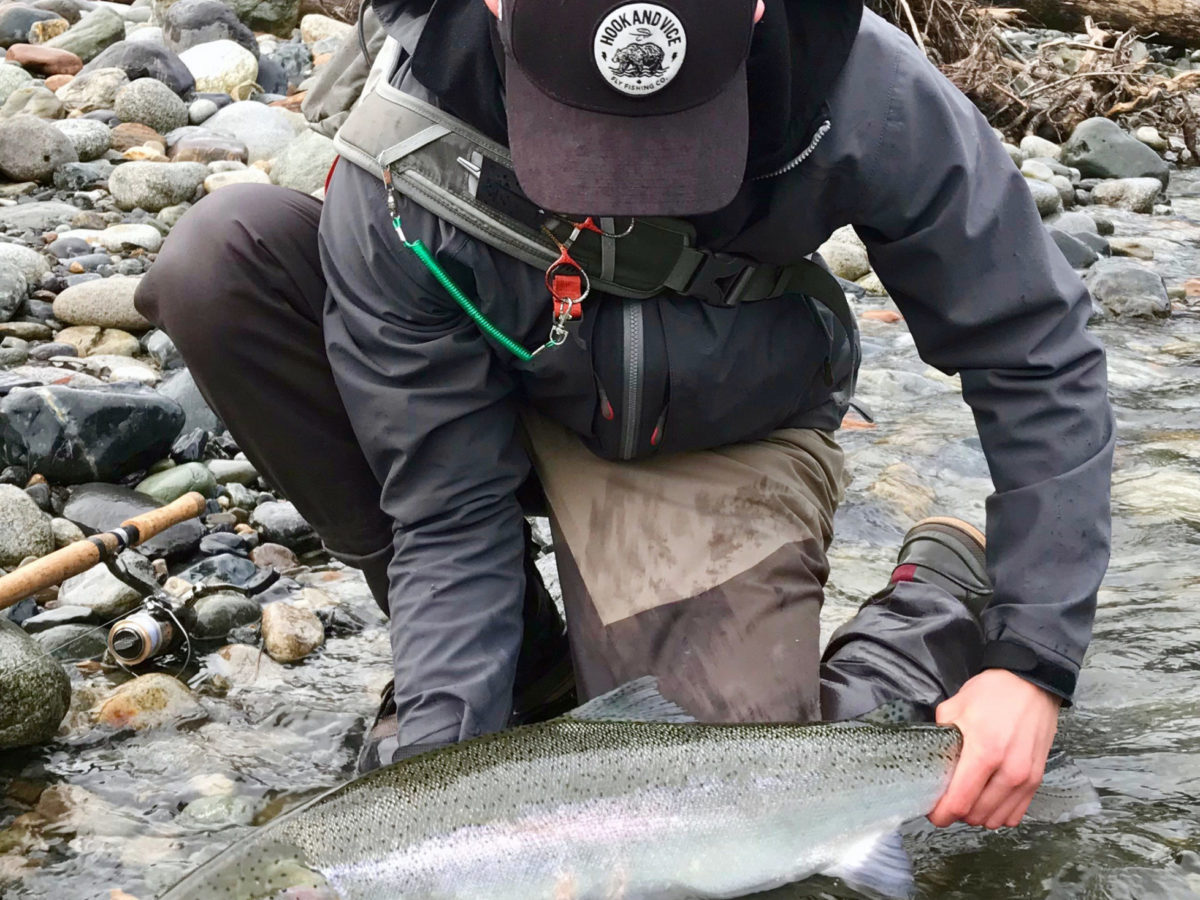OUTLOOK
Go fishing now because winter is coming! That is the theme of this week’s report. We heard better steelhead reports from the Vedder this week, some solid reports front the Squamish and a few other fisheries were in good shape. The news this week is the weather on the horizon. In the next 2 days we have snow in varying degrees forecasted for the region and starting Sunday we have a substantial cold spell. With temps at night below –10 in both Chilliwack and Squamish we can expect rivers to plummet and fishing to get challenging. In this week’s report we look at the major systems with some predictions on water levels. The one thing to remember with very cold temperatures is that fish that are feeding like bulltrout will shut down completely while fresh steelhead will still be active when things get cold. Use this to plan your week of fishing.
With the cold weather in mind we have an update on ice fishing. Sterling has been ice fishing since he was a kid and he has some fresh reports from the interior and some tips on how he sets up his ice fishing rig.
Lastly, we have been getting asked a ton of questions about prawning and we have a 101 piece on setting up a prawning string. If you have a boat, have never done it before or want to tweak your existing setup, check out the saltwater section where Jordan lays out all the key pieces to get you in the game. Jason also has a winter chinook update.
For all the report info in Video Format, click here for the YouTube version of this week’s Friday report:
CLASSES AND COURSES
Steelhead Float Fishing
In this fishery, 10% of the anglers catch 90% of the fish. This is your chance to learn from the 10%! Our 3hr evening seminar will educate you on the gear, water types, conditions and other key variables that put veteran steelhead anglers in that 10%. Mastering this fishery will make you the envy of your friends. Upgrade your seminar to include a fully guided day on the water, putting into practice your new knowledge with a Pacific Angler guide.
Seminar: Jan 13, 2020
Seminar Time: 6:30pm – 9:30pm
Guided: Jan 18, 19, or 26 – Custom Trip Dates Available
Guided: Full Day
Seminar Only Cost: $50.00+GST
Seminar & Guided Walk’n Wade Cost: $275.00+GST per angler, minimum of 2 anglers per guided day on the water.
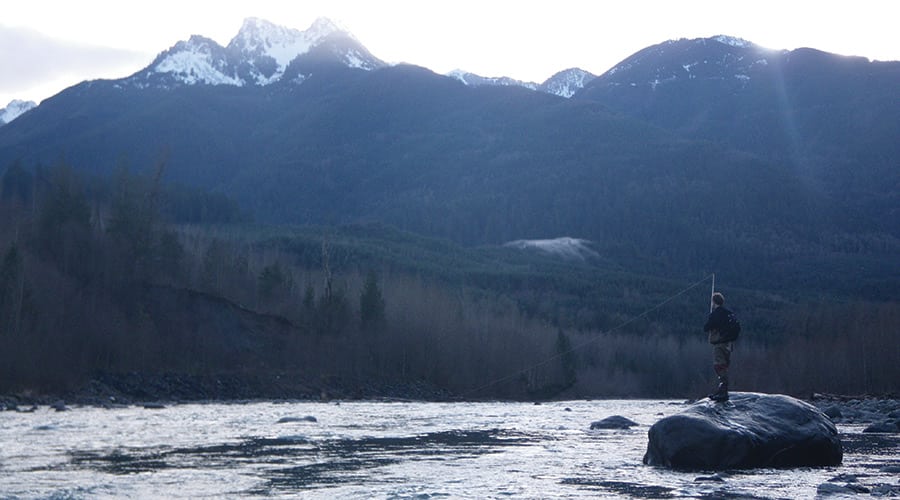
Fly Fishing Egg Patterns
This course is designed to teach you the secrets to one of the most productive presentations in the BC fly fishermen’s arsenal; nymphing egg patterns. This deadly method can be used for different species of trout, char, and salmon. During a 3 hour evening seminar we will teach you key concepts, strategies, and gear that will give you a well-rounded foundation during the seminar portion of the class. Then you will put those skills into practice during a fully guided day on the water.
Seminar: Jan 14, 2020
Seminar Time: 6:30pm – 9:30pm
Guided: Jan 18 or 19, 2020
Guided: Full Day
Cost: $275.00+GST
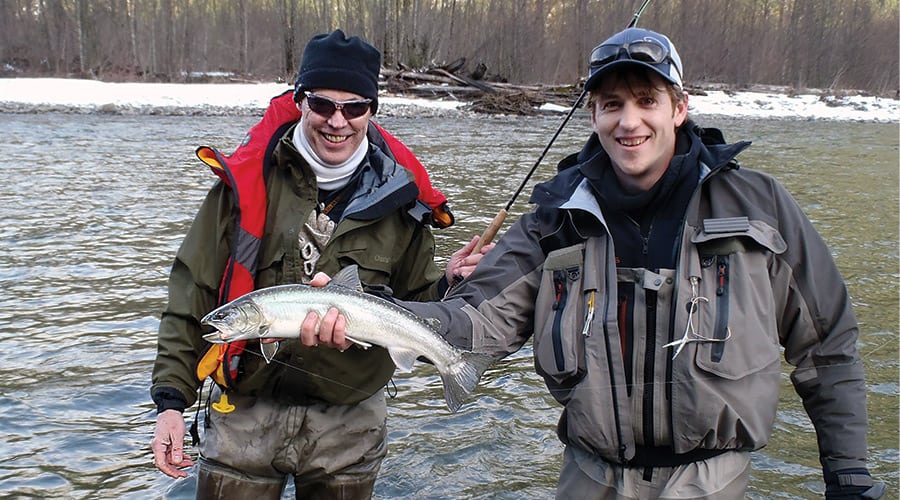
Tying Essential Steelhead Patterns
This course is designed for the fly tyer looking to get the best start on tying steelhead patterns. In the 3-hour evening seminar your instructor will cover everything from tying techniques, material and colour choices, size and weight. They will walk you through 3 essential patterns that will build a well-rounded steelhead fly box. If you’re looking to get yourself into tying your own flies for steelhead, this is the course for you. This course is suitable for fly tiers with a basic knowledge. Students are required to supply their own vise, tools and materials. A 10% discount is available on materials and tools purchased for the course.
Date: Jan 21, 2020
Cost: $50.00+GST
Time: 6:30pm – 9:30pm
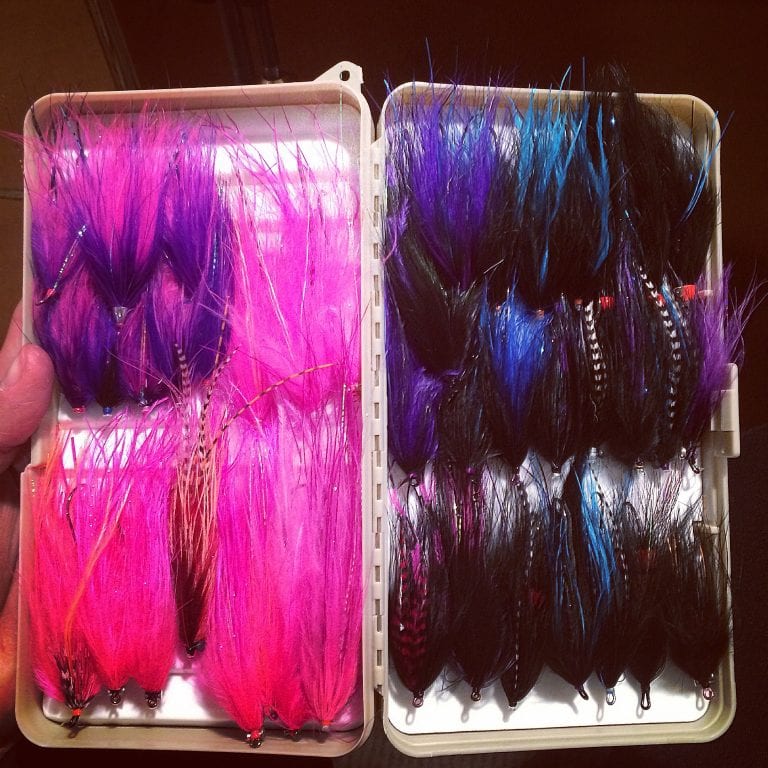
Introduction To Fly Tying – SOLD OUT, Call the shop to add your name to the waitlist
There is no greater satisfaction than catching a fish with a fly you tied yourself. This Introduction to Fly Tying course was specifically designed to give you the fundamental skills needed to tie proven fly patterns used here in BC for trout, salmon, and steelhead. This course consists of 3 sessions; each session is 3hrs. Students are required to supply their own vise, tools and materials. A 10% discount is available on fly tying materials and tools purchased for the course.
Dates: Jan 22, 29 & Feb 5, 2020
Cost: $80.00+GST
Time: 6:30pm – 9:30pm

FRESHWATER FISHING REPORTS
Chilliwack/Vedder River Fishing Report
While fishing has been picking up a bit, more high and muddy water this week has put a wrench in most steelheaders’ plans to fish the Vedder. The river crested at almost 2.5 meters on Wednesday and has been on the drop since. We are getting some more mixed precipitation this weekend but next week there are some extremely cold temperatures and blue bird skies coming so expect the river to clear up and drop quickly. Those that can brave the cold during the first few days of the week should be in for some great Steelhead conditions before the river passes into the low and clear phase.
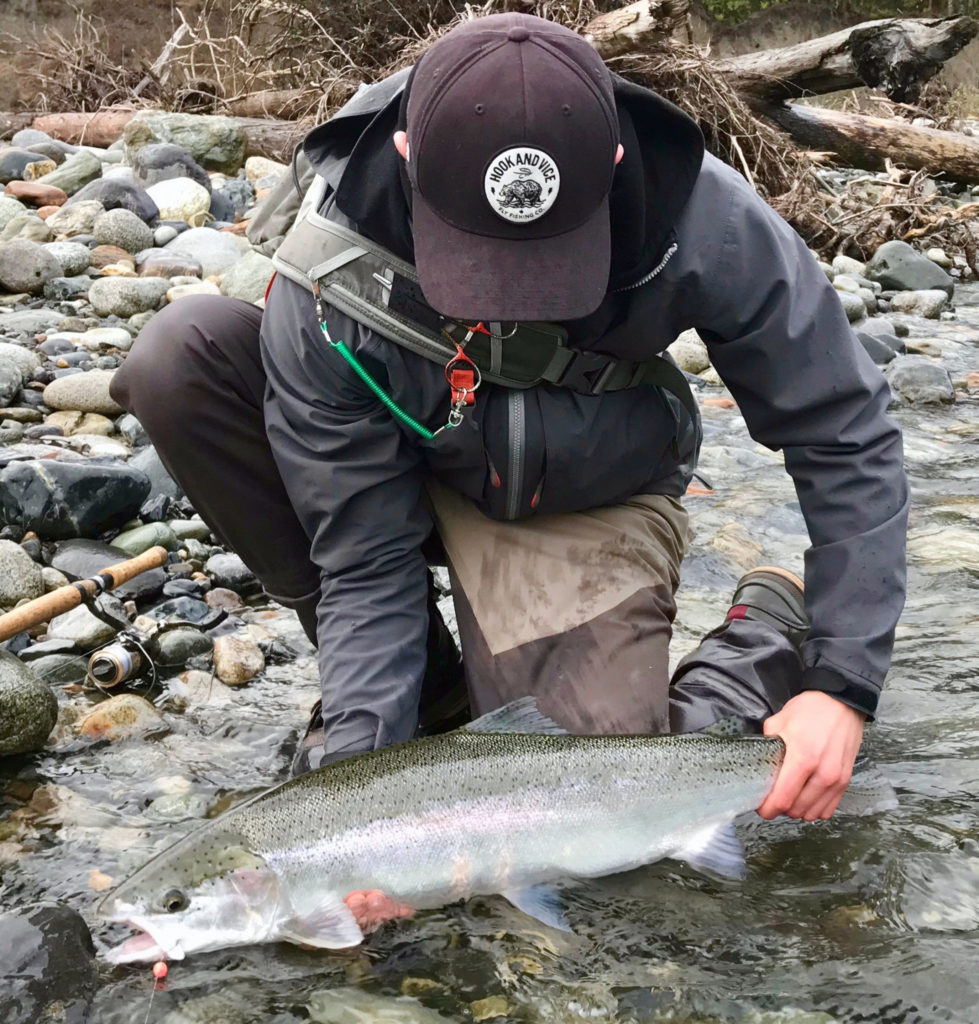
You will need to cater your presentation to the water conditions and, over the next 7 days, these conditions will most likely vary greatly. Fish big, bright, smelly, and tight to shore in that high water. This means 6 inch worms, big gobs of bait, or big blades. Once the water drops in the latter half of the week expect to downsize considerably and to cover much more water as more slots and pools opens up. This is when single eggs, beads, wool ties, corkies, jigs, or small nickel-sized baits will work better.
Dress warm and get out there! It’s impossible to catch fish by staying at home!
Alex Au-Yeung
Squamish River Fishing Report
Well it looks like we have the complete opposite conditions of last week coming our way. Last week we saw rain and the river definitely bumped but not enough for a complete blow out. It was high but fishable and we heard some reports of anglers getting into some nice fish. As of Wednesday, the river was low and getting clear.
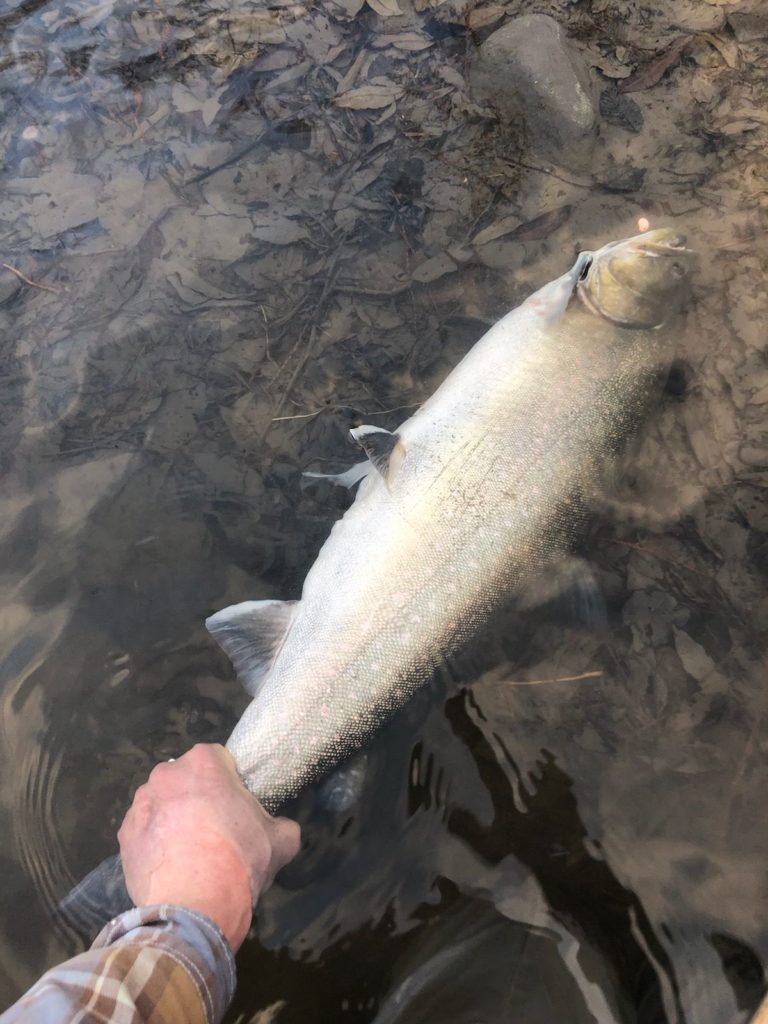
Looking at the forecast for the next few days we are going to see snow and then things clear up and get downright cold. Usually when we see temps that are -1 to -3 overnight the fishing can be pretty good during the day as the temperatures rise to 0 or +1 or +2. This coming week the highs look like they will be -6 at its warmest and this will make things quite challenging. With lows overnight below -10 don’t be surprised to see parts of the river frozen over if you head out. A note on safety when conditions are like this. Please don’t walk on ice sheets that have formed on the river’s edge. The last thing we want to hear about is an angler that was walking on the ice and then fell through. This can be quite dangerous so please avoid doing so.
If you are choosing to go out, presentation will be key. Expect the water to be low and gin clear. I have fished in these conditions many times over the years and I usually don’t expect to catch anything. I have seen pockets of bulltrout and have literally tickled their noses with streamers and they completely ignore it as they are trying to conserve energy in the frigid water. Downsize presentations dramatically if you are hoping to have success. I generally fish beads when it is this cold as they are unobtrusive and you can get a very natural drift easily with them. Colour choice will need to be dead on so make sure that you have a variety of colours at your disposal.
This will most likely be the best time of the year to get out and scout for steelhead spots. As the river drops and goes crystal clear you will be able to see everything in every run. Make notes of snags, logs and boulders. This will help in the long run as when the rivers rise and colour up during steelhead season you will be able to pick your presentation accordingly.
We have an epic selection of jigs, beads and flies right now for all the species that you will be wanting to target over the next couple of weeks so come on into the shop and let us help you fill the holes in your kit
Zach Copland
Ice Fishing Report
Growing up with a cabin along Highway 24, I have been able to spend numerous holidays peering through a hole in -30 degree conditions and learned to love and appreciate this style of fishing no matter how ludicrous that sounds to some. I was unfortunately unable to get up into the Cariboo region this holiday season but luckily my brothers were able to get into plenty of fish and even land a couple in the 5+ lb range. The warmer day time temperatures (-10 to 0 degree) paired with less wind than usual made for comfortable conditions. This trend doesn’t look to hold as it’s dropping back down to the -20 degree range over the next week in both the interior and Cariboo.
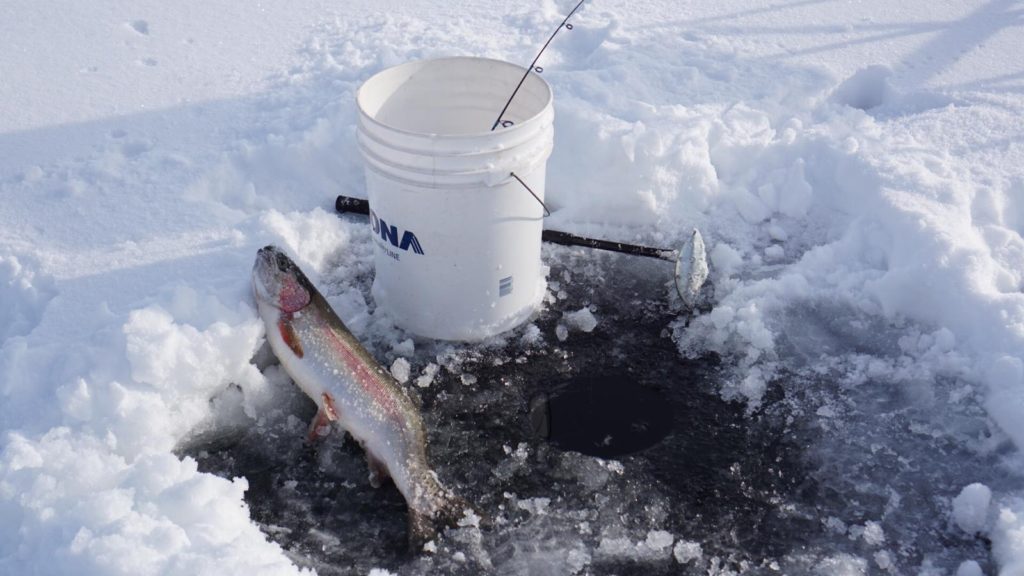
For techniques, I’ll argue that a 3-5” flutter spoon paired with a prawn-tipped jig is nearly unbeatable. I really don’t have any particular preference for flutter spoon colors and use everything from perch patterns to brass/nickel spoon combinations. The important aspect when it comes to a flutter spoon is that it has a long, sleek profile. I typically will attach a swivel or split rings when necessary to the top and bottom ends of the spoon. From the bottom swivel, I tie on a 12-18” fluorocarbon leader to my glow head jig. Don’t be afraid to tie on thicker (10+lb) material as your fingers will thank you for it. Too thin of a line will constantly break at the swivel as line strength integrity severely drops in sub-zero temperatures. I like to tip the jig with natural or procured prawn, but mealworms are also an effective option if you’re fishing a treble hook. I’ve found that dead-sticking the bait either right on the bottom or a foot off the bottom is just as effective as jigging so don’t feel pressured to constantly try and get the perfect jigging action.
Like Aidan’s report from last month, I do most of my fishing in 15-30 feet of water with this style to get into some fresher fish. If you’re approaching a lake and have no idea where to start, it’s always a good move to start shallower (5-10 ft depending on water clarity) so you can see the bottom and seeing if fish are even cruising through those areas. Fish are curious by nature and will come and investigate your lure if they’re in the area. No fish checking out your lure typically means you need to move deeper.
Sterling Balzer
SALTWATER FISHING REPORTS
Vancouver Saltwater Salmon Fishing Report
Looks like winter is coming in with a vengeance after this weekend with sub-zero temps day and night forecast for next week. It’s not going to be too cold on the weekend, but the winds are less than desirable, at least according to the current forecast this Thursday afternoon as I write this report. Let’s hope the forecast for the weekend improves by Friday afternoon, as we have plans to head out with some clients as well as some personal trips. There is no doubt this time of year you need to be prepared for the weather. If you are dressed right the wet and cold days can be not only tolerable but also quite comfortable. Good deck boots, some layering pieces, plenty of fleece and good quality rain gear will keep you comfortable. Add in some good gloves, a toque, some hand warmers, and a portable heater and you are good to go. Leave the jeans, sweat pants, and cotton at home. Invest in some good next to skin base layers for warmth and wicking, top it off with fleece and/or some wool, then a good waterproof breathable shell and enjoy. All the hardcore river rats and winter steelheaders know what I am talking about; we are old hats at this game. If you are cold, come to the shop, we have a great selection of gear to keep you warm and dry.
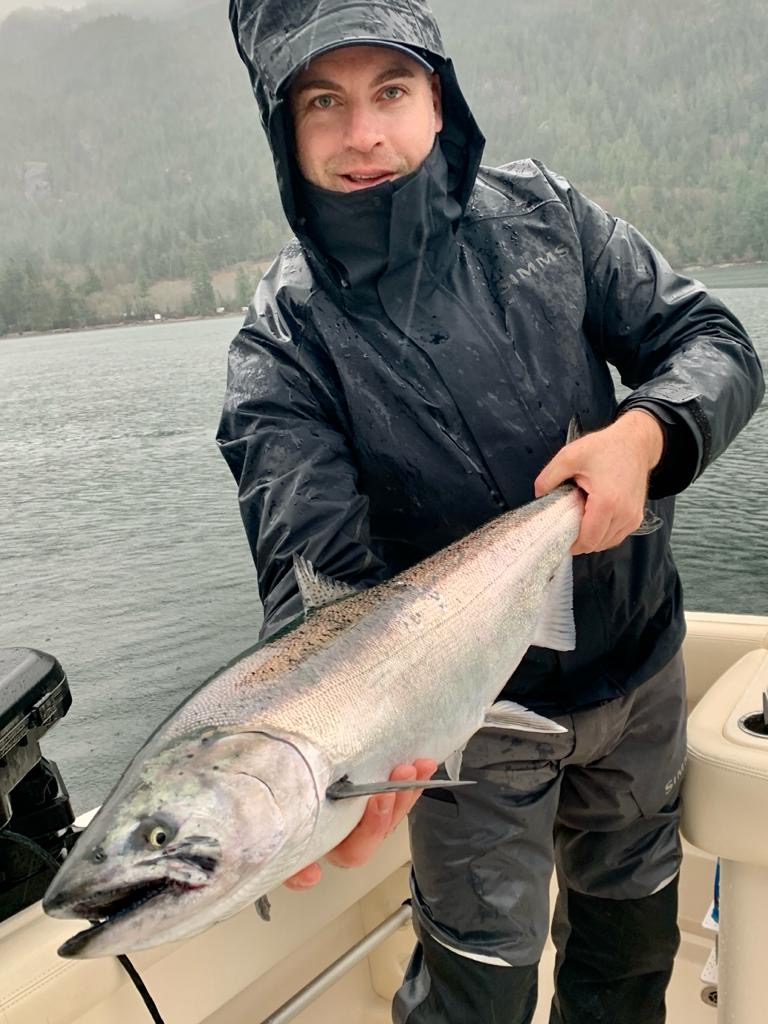
Fishing was solid this past week. As usual, find the bait and you find the fish. Covering water and good electronics are two keys in achieving this. If you aren’t seeing bait balls and arcs on your sounder, like ever, you need to call me and I will figure out what is going on.
For whatever reason it was a hootchy show for us on our last trip. My usual spoons failed to produce and the fish wanted the hootch. I don’t argue after a few bites, so down went a hootchy on the other side and we got into some nice keepers and lost a few as well. Stomach contents didn’t offer any hints, as the fish we cleaned were empty. In last week’s report I covered in detail which Yamashita hootchies have been productive. For leader length we have been having success with 32-38 inch leaders on 40 or 50 pound mono and two single hooks of 5/0 or 4/0. A good tip is to use heavy mono like this as the stiffness gives the hootchy a bit more action from the flasher rotation.
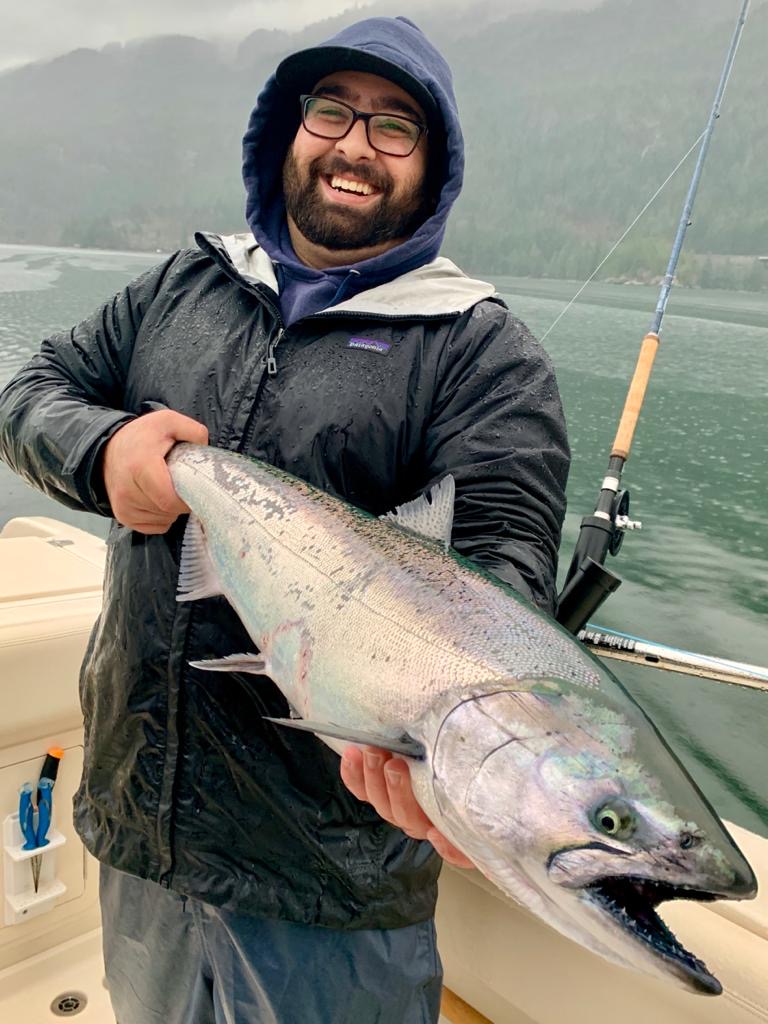
Prawning has also been good and we are getting no prawns with berries, so that is good as well. It is definitely worth taking the time to drop your traps, but look out for those outflow winds in the forecast. They can make retrieving your gear not so much fun. Check out Jordan’s Prawning 101 piece below for some tips and tricks for your next trip.
It’s prime time right now, so give us a call (778-788-8582) and let’s get out there winter chinook fishing and prawning.
See you in the shop or on the water,
Jason Tonelli (the warm and dry guy)
Prawning 101
With winter chinook fishing on its merry way and anglers finding some local fin fish, this week I’ll talk about a fairly basic but effective prawning set up for those wanting to drop some traps for shellfish.
Starting inside the boat, the one thing you’ll need is a trap or prawn puller. The two most common ones are the ones from Scotty and Brutus. They both work great, with the Brutus even helping you clear your gunwale and helping you lift the trap right in to the boat. Both attach to your Scotty downrigger base. Trap pullers will save your arms and back, making the experience more enjoyable.
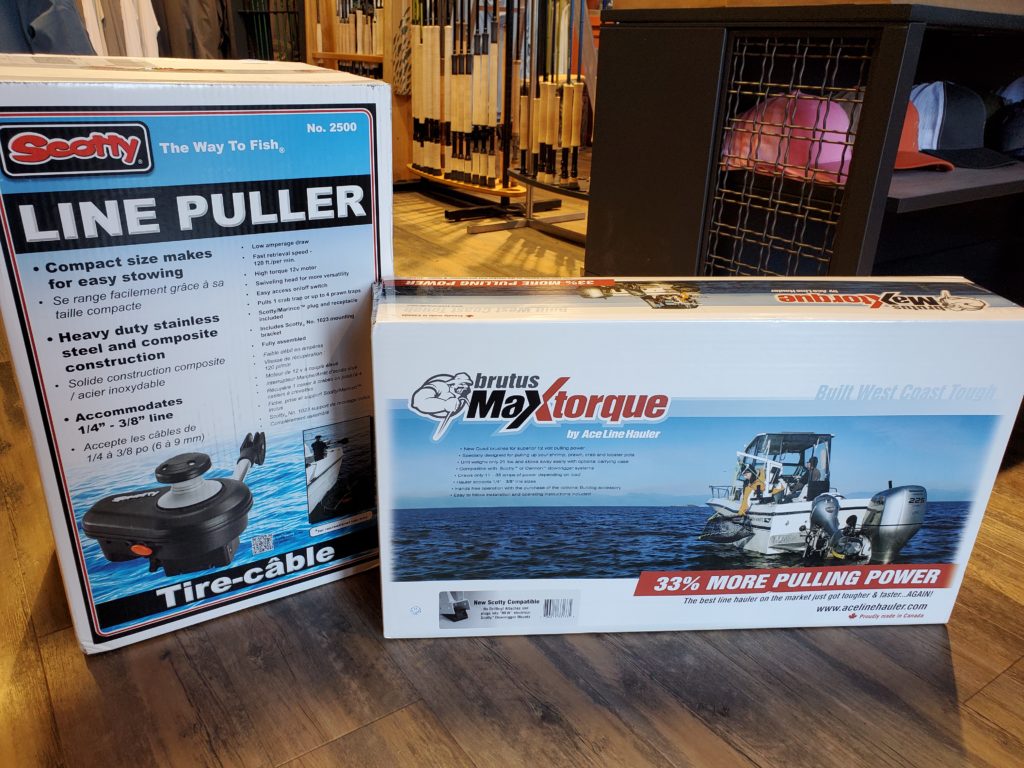
Next up, you’ll need is a buoy or two that can hold up the length of weighted rope used. You can use two or three of your standard crab floats, or you can use one larger dedicated prawn float. Either way, both work- just make sure to have your name and phone number clearly labeled.
From there, spliced or dedicated prawning rope is used, usually in lengths from 400′ to 500′ feet. This length is important as most traps are set in or around 300ish feet, give or take.
Another reason we use this length is that depending on one or two traps, plus the trap line weight, a good portion of the rope is spread across the ocean floor between the first trap and the line weight.
The next thing attached is a trap line weight. This is usually between 5lbs and 7lbs, and is attached about 25′ away from the trap closest to the float. This will help inhibit any wave action from affecting the traps as the rope bounces around.
Up next is the trap itself. Trap styles come down to personal preference, with stackable and collapsible both being options depending on storage space and boat size. Unless you get yourself bigger commercial traps, most recreational traps will require additional weight- either strapped on to the frame, or wrapped around its circumference. Regardless, you need the trap to stay still and stationary to encourage prawns to explore and enter the trap.
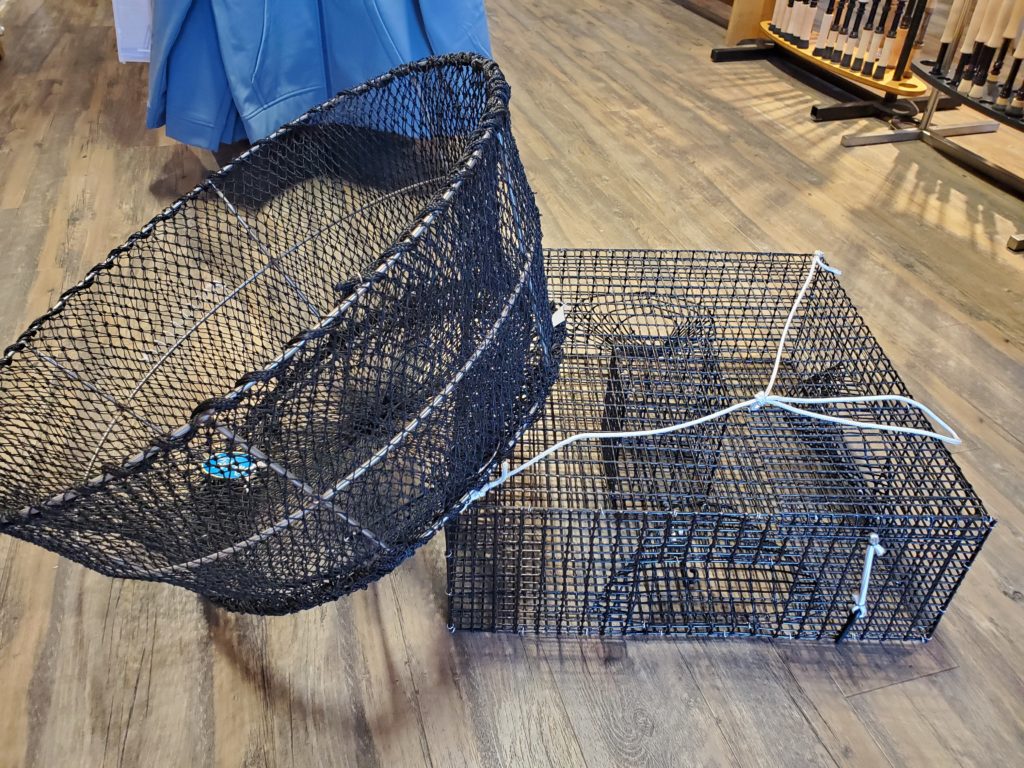
Other accessories needed will be prawn snaps that attach the trap to the main prawn rope, and of course, your bait jar. It’s important to use jars instead of bags as most prawn baits are in pellet form, and you need the pellets to swell and then break apart/disperse. A bag will not work as the holes are too big.
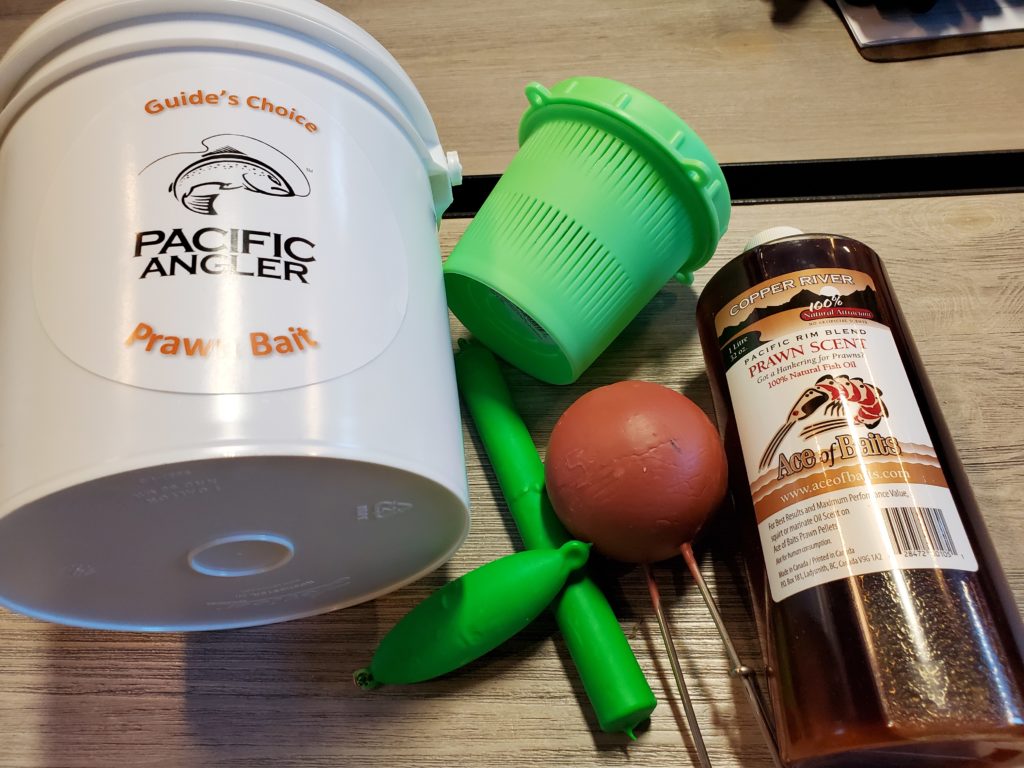
As for bait, most available baits such as oils and pellets work great, with a lot of anglers finding their own secret formulas and ratios. The biggest thing is to not over-fill the jar as the pellets will expand and clog the perforated walls of the jar.
For a more hands-on look at the gear, come on in to the shop and see us; we will be happy to help walk you through any questions you may have.
Good luck out there, and stay safe!
Jordan Simpson


